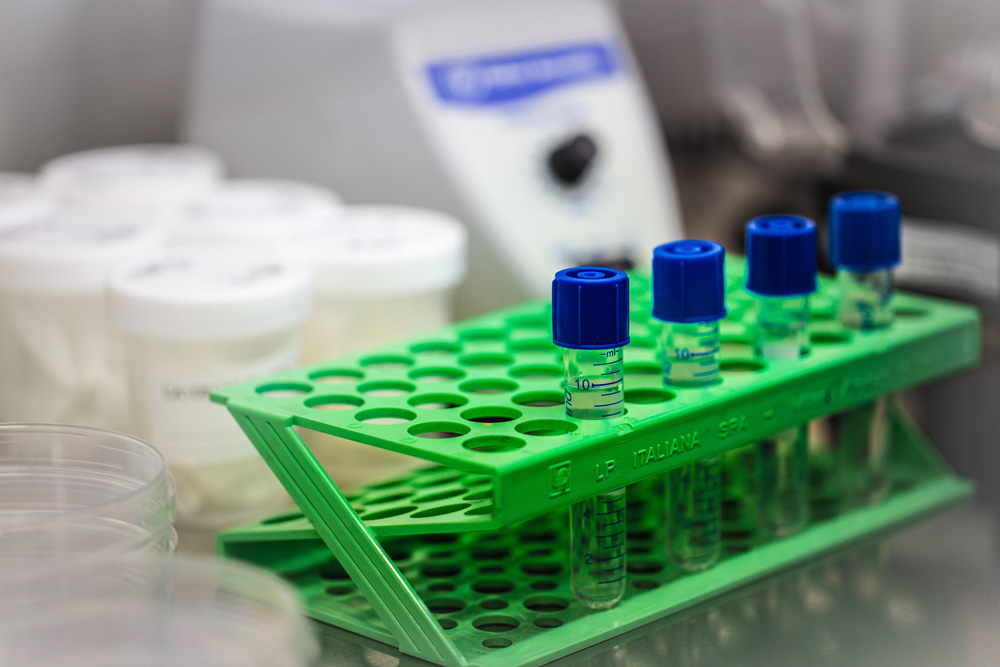ABICH’s Cell Biology and Toxicology laboratory performs in-vitro safety and efficacy tests on specific cell lines and in-vitro reconstructed human tissue to evaluate cosmetics, raw materials, and medical devices.
The wide range of available protocols allow to test raw materials and consumer products like cosmetics, medical devices, and textiles, in line with OECD methods, ISO standard, and GLP.
The Cell Biology Department staff is also available to develop customised experimental protocols and research specific in-vitro models allowing to test samples on the basis of their specific properties and applications.
Any chemical and microbiological analysis can be carried out in-house, which allows to perform multidisciplinary experiments.
In-vitro safety testing offered by Abich:
- Cytotoxicity testing;
- Cytotoxicity testing: for medical devices, in line with the UNI EN ISO 10993-5 standard;
- Eye irritation testing: on monolayer cells and 3D reconstructed corneal epithelium;
- Eye corrosion testing: “fluorescein leakage” (OECD 460);
- Skin irritation testing: on cell monolayers and in-vitro reconstructed epithelia of different origin (OECD 439);
- Skin corrosion testing: (OECD 431, 435);
- Percutaneous absorption testing: (OECD 428);
- Skin sensitization testing: (THP-1, dendritic cells);
- Phototoxicity testing: (OECD 432);
- Ames testing: mutagenesis (OECD 471);
- In-vitro carcinogenesis testing: (Balb/3T3 – B.21 method, Annex V, Directive 67/548/EEC);
- Ecotoxicity testing: on Daphnia Magna (OECD 202) and seaweeds (OECD 201).
In-vitro efficacy testing offered by Abich:
- Antioxidant and antiradical activity testing: on skin cells (ROS analysis);
- Direct antioxidant activity testing;
- Skin anti-ageing and redensifying activity testing: mitogenic activity, stimulation of protein synthesis, stimulation of the protein synthesis by extracellular matrix (collagen, elastin, fibronectin, etc.);
- Anti-inflammatory activity testing: on skin cells and in-vitro reconstructed epithelia of different origin;
- Evaluation of pro-inflammatory potential: through the analysis of cytokines and growth factors (IL-1α, IL-1β, IL-8, GM-CSF, TNF-α);
- Cell proliferation testing: on skin cells;
- Melanogenesis modulation testing: increase/inhibition of melanin synthesis for depigmentation or pigmentation products;
- Percutaneous absorption testing: on skin reconstructed according to the OECD 428 method;
- Skin barrier testing : on reconstructed skin;
- Keratolytic effect assessment testing: on reconstructed skin;
- Wound healing activity testing: on endothelial cells and keratinocytes/fibroblasts;
- Immune response modulation testing: through the analysis of specific mediators (i.e., histamine, IL-1α, TNF-α) for anti-itch activity, inhibition of sensitization, immunostimulant activity;
- Evaluation of cellular senescence;
- Sebum normalization activity testing: lipase inhibition;
- Evaluation of 5-alpha-reductase inhibition;
- In-vitro moisturizing activity testing;
- In-vitro testing on sun protection products: UVA-PF in line with the ISO 24443: 2012/COLIPA 2011 standard, SPF UVA “Broad spectrum” in line with the FDA 2011 and AS/NZS 2604:2012 standard, UVA/UVB ratio in line with the Boots Star Rating 2008, blue light protection and IRA protection.
